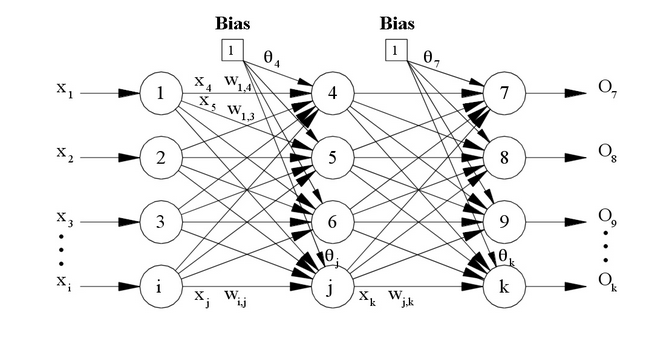Backpropgation
The Backpropagation neural network is a multilayered, feedforward neural network and is by far the most extensively used. It is also considered one of the simplest and most general methods used for supervised training of multilayered neural networks. Backpropagation works by approximating the non-linear relationship between the input and the output by adjusting the weight values internally. It can further be generalized for the input that is not included in the training patterns (predictive abilities).
Generally, the Backpropagation network has two stages, training and testing. During the training phase, the network is "shown" sample inputs and the correct classifications. For example, the input might be an encoded picture of a face, and the output could be represented by a code that corresponds to the name of the person.
A further note on encoding information - a neural network, as most learning algorithms, needs to have the inputs and outputs encoded according to an arbitrary user defined scheme. The scheme will define the network architecture so that once a network is trained, the scheme cannot be changed without creating a totally new net. Similarly there are many forms of encoding the network response.
The following figure shows the topology of the Backpropagation neural network that includes and input layer, one hidden layer and an output layer. It should be noted that Backpropagation neural networks can have more than one hidden layer.
